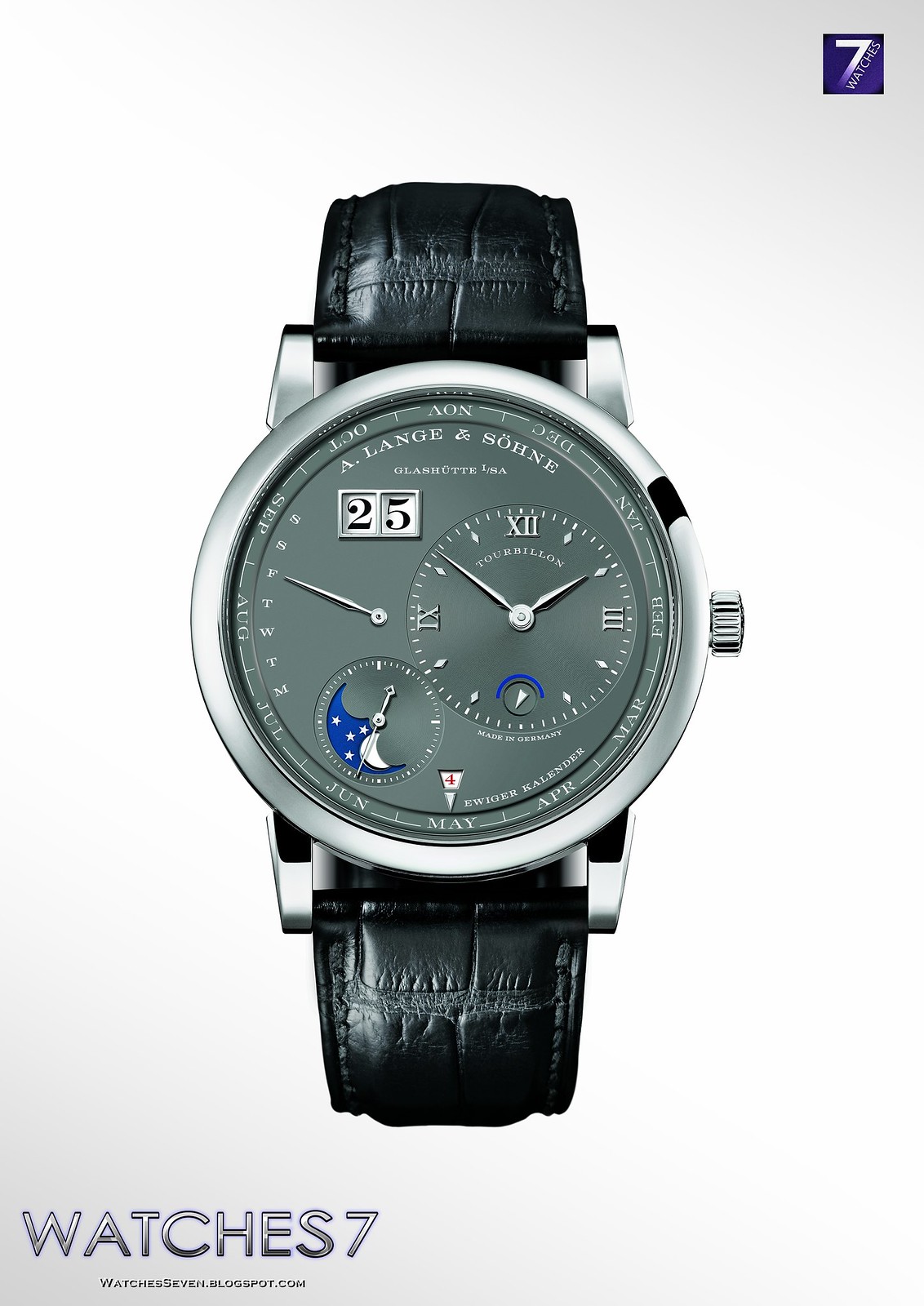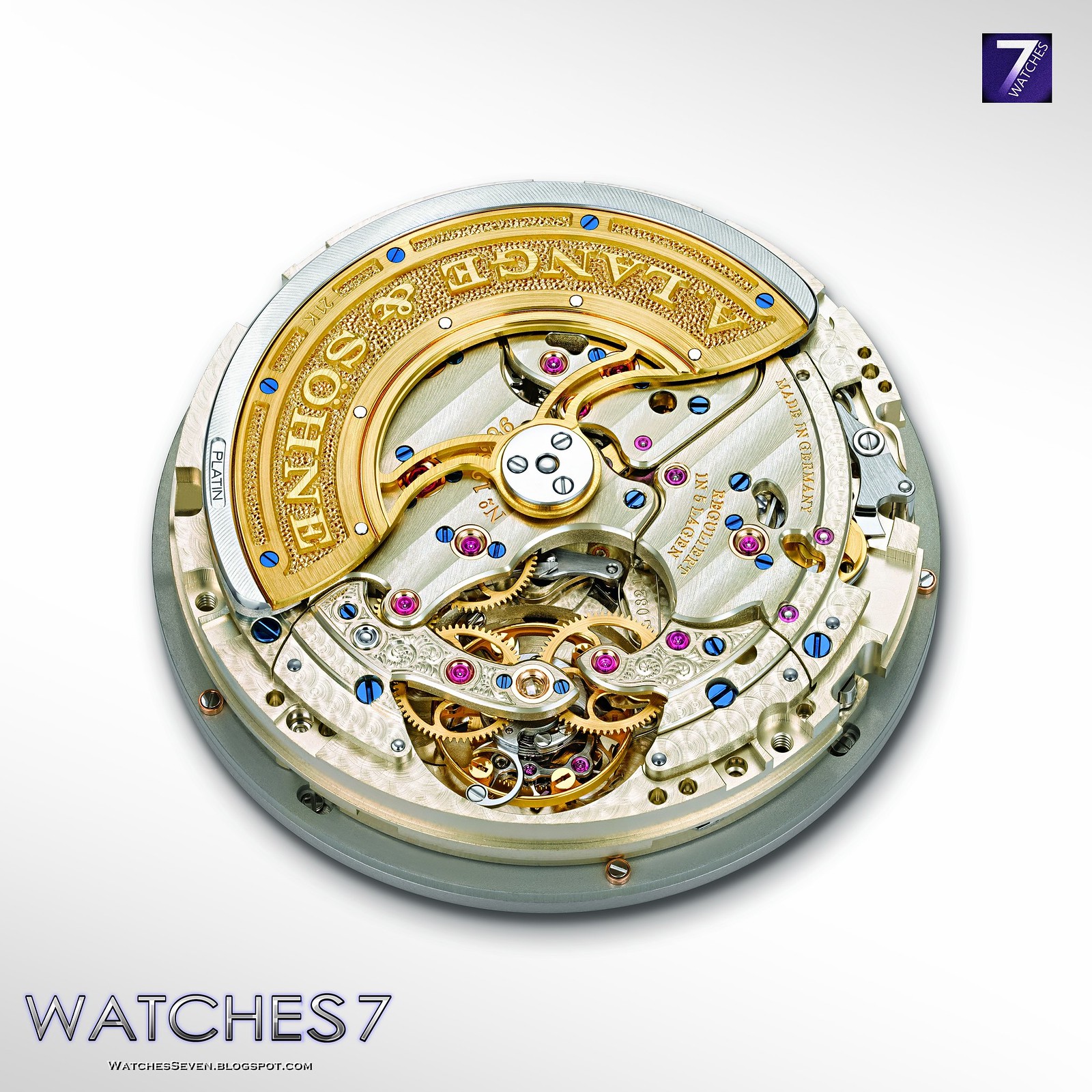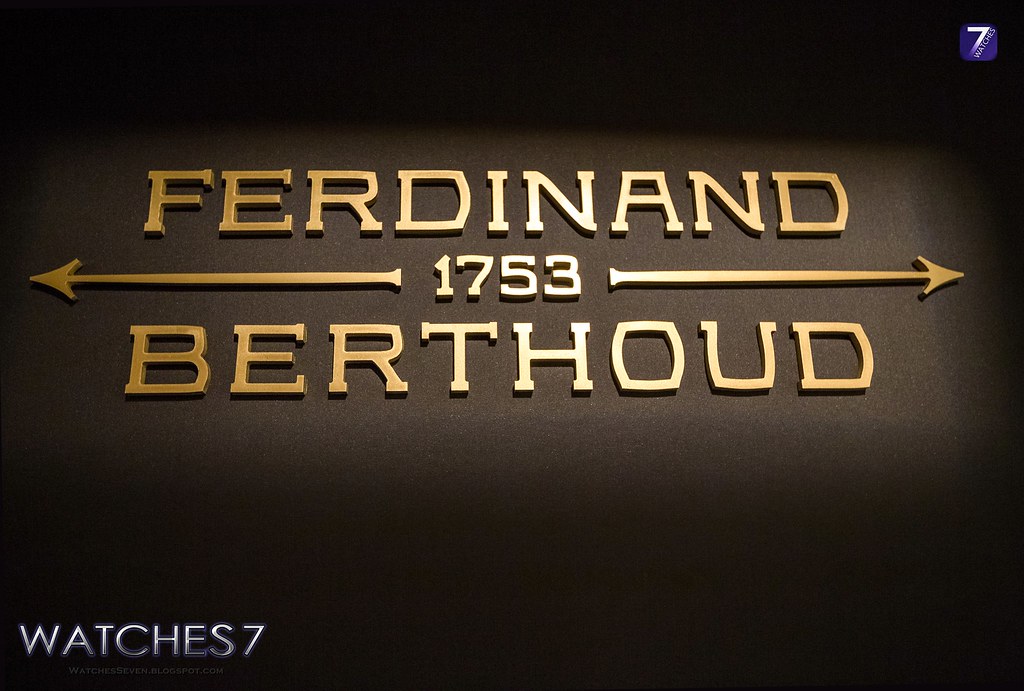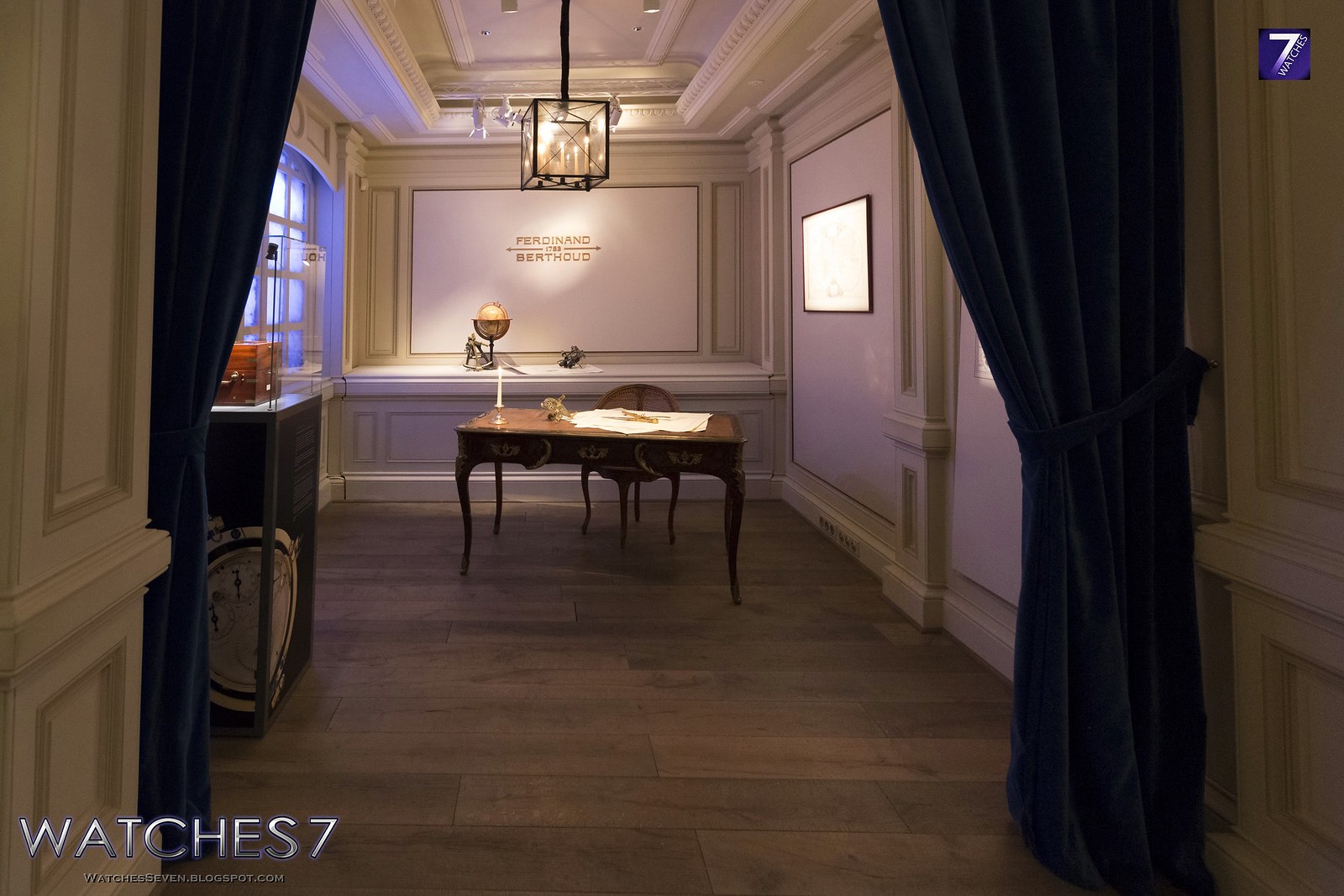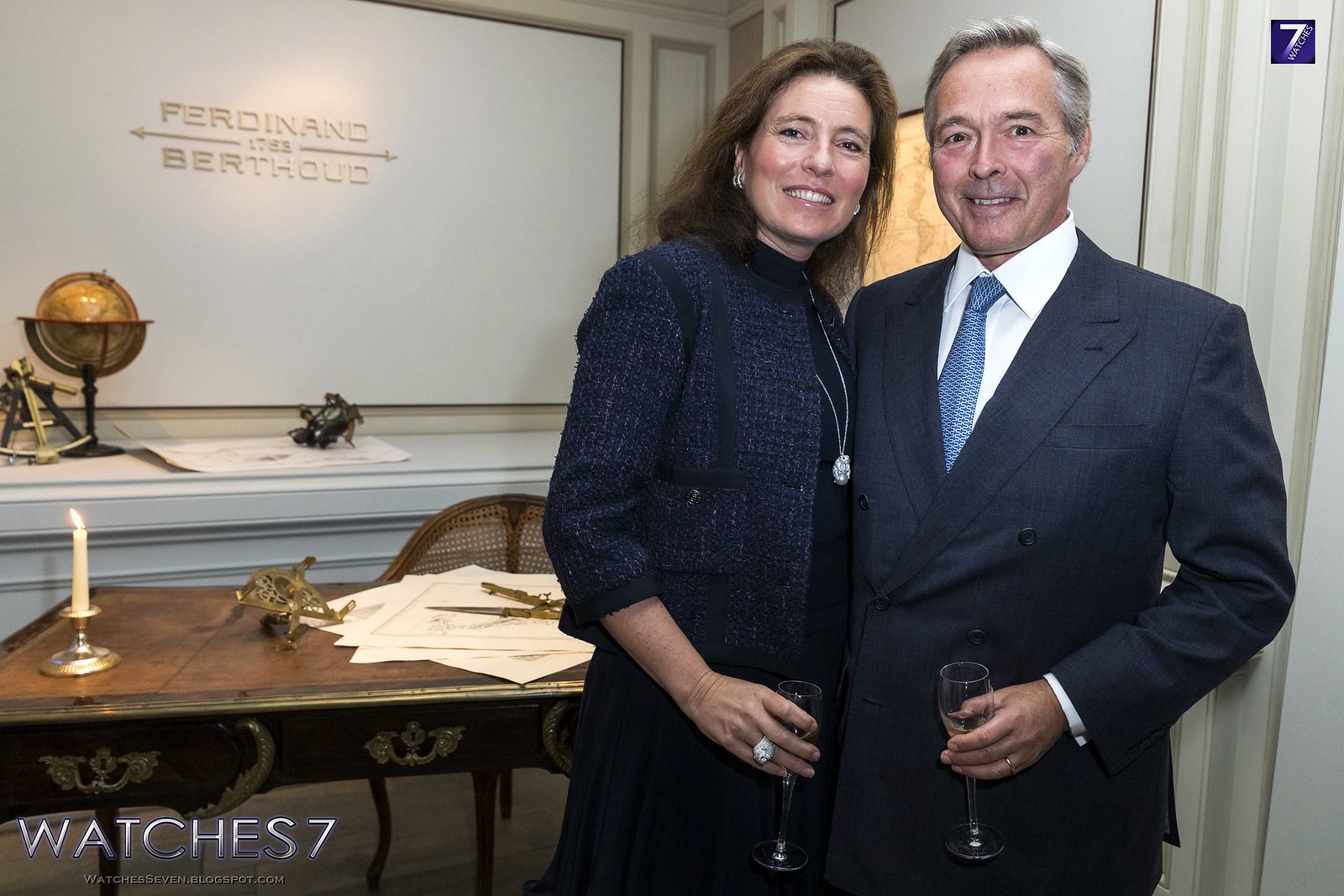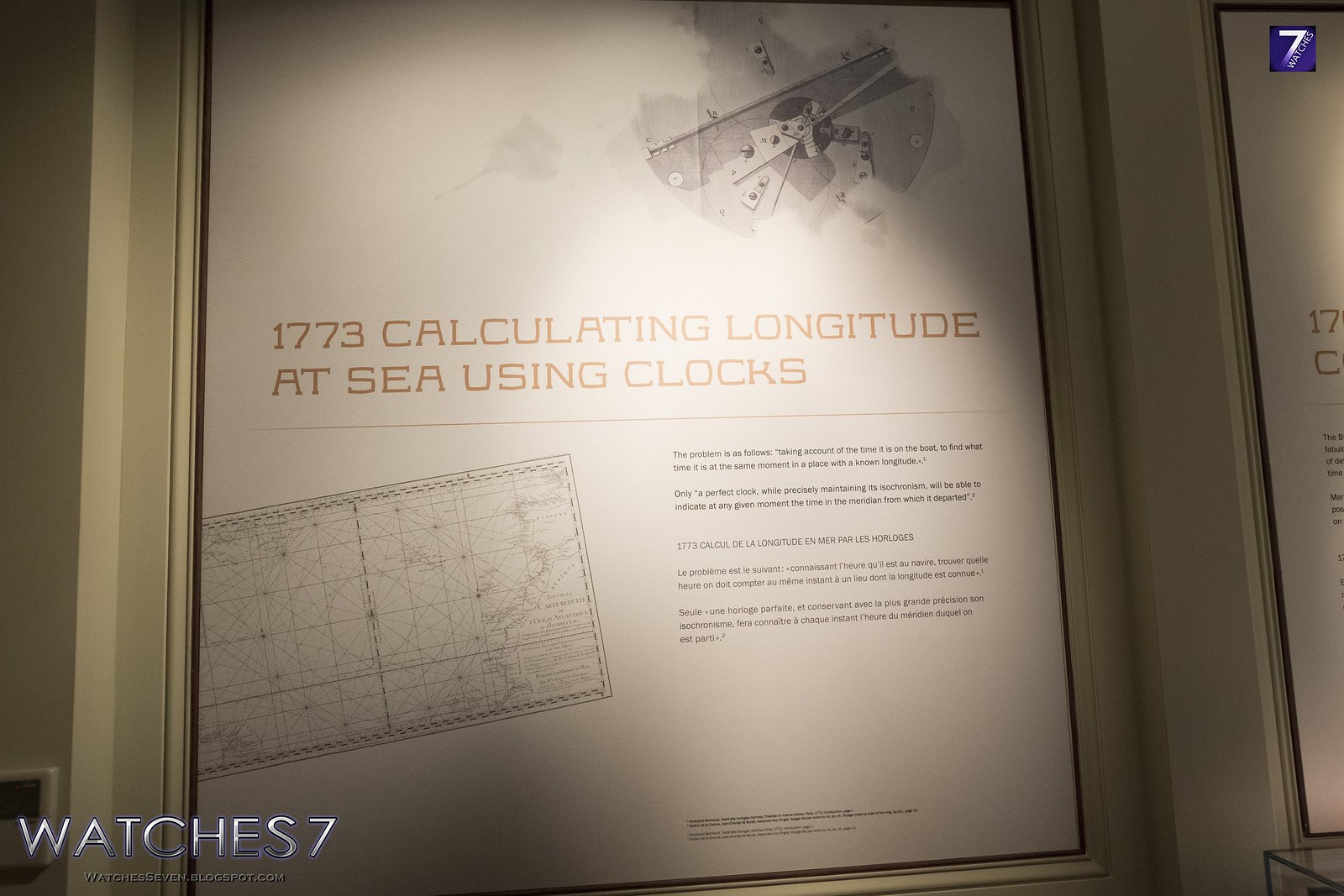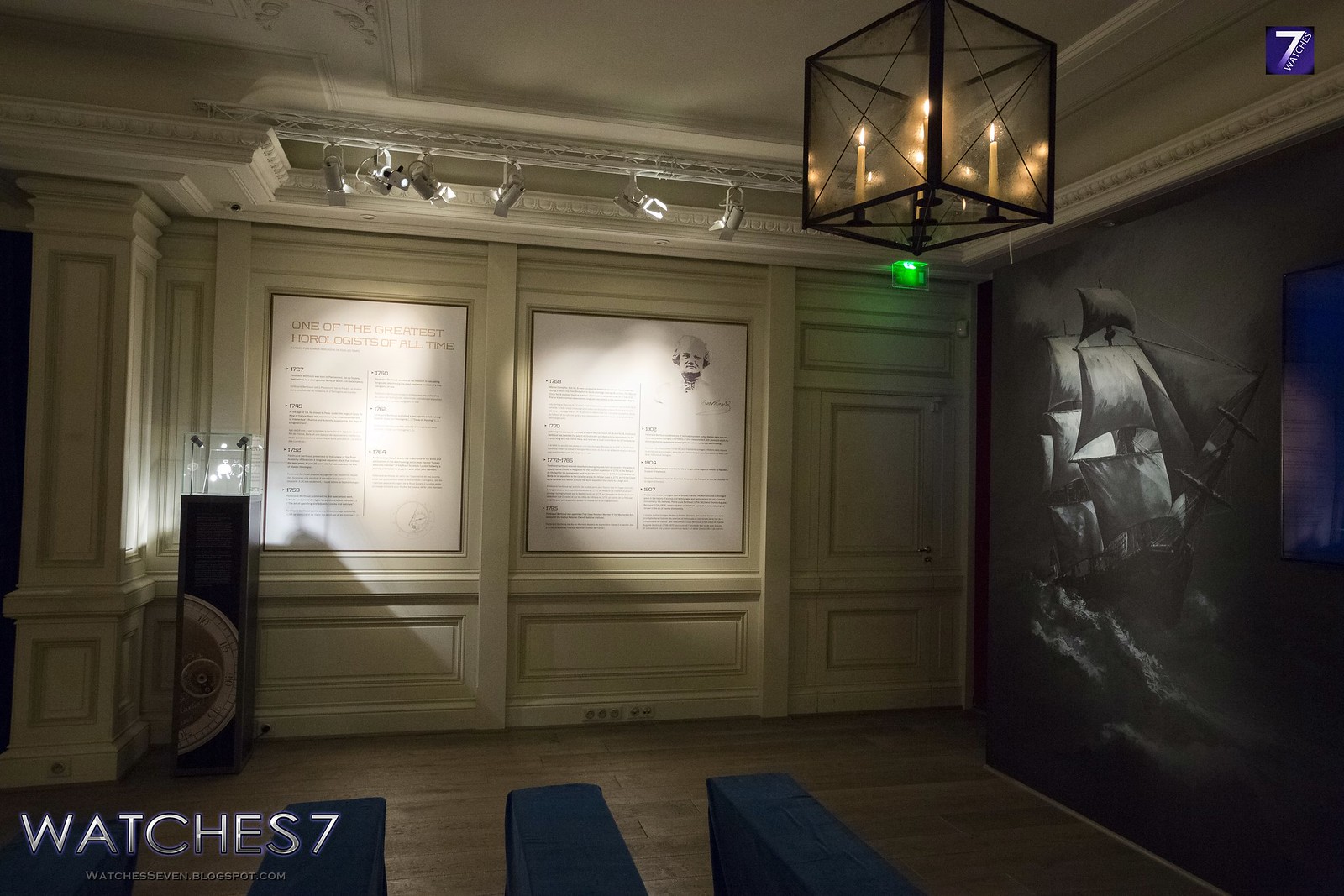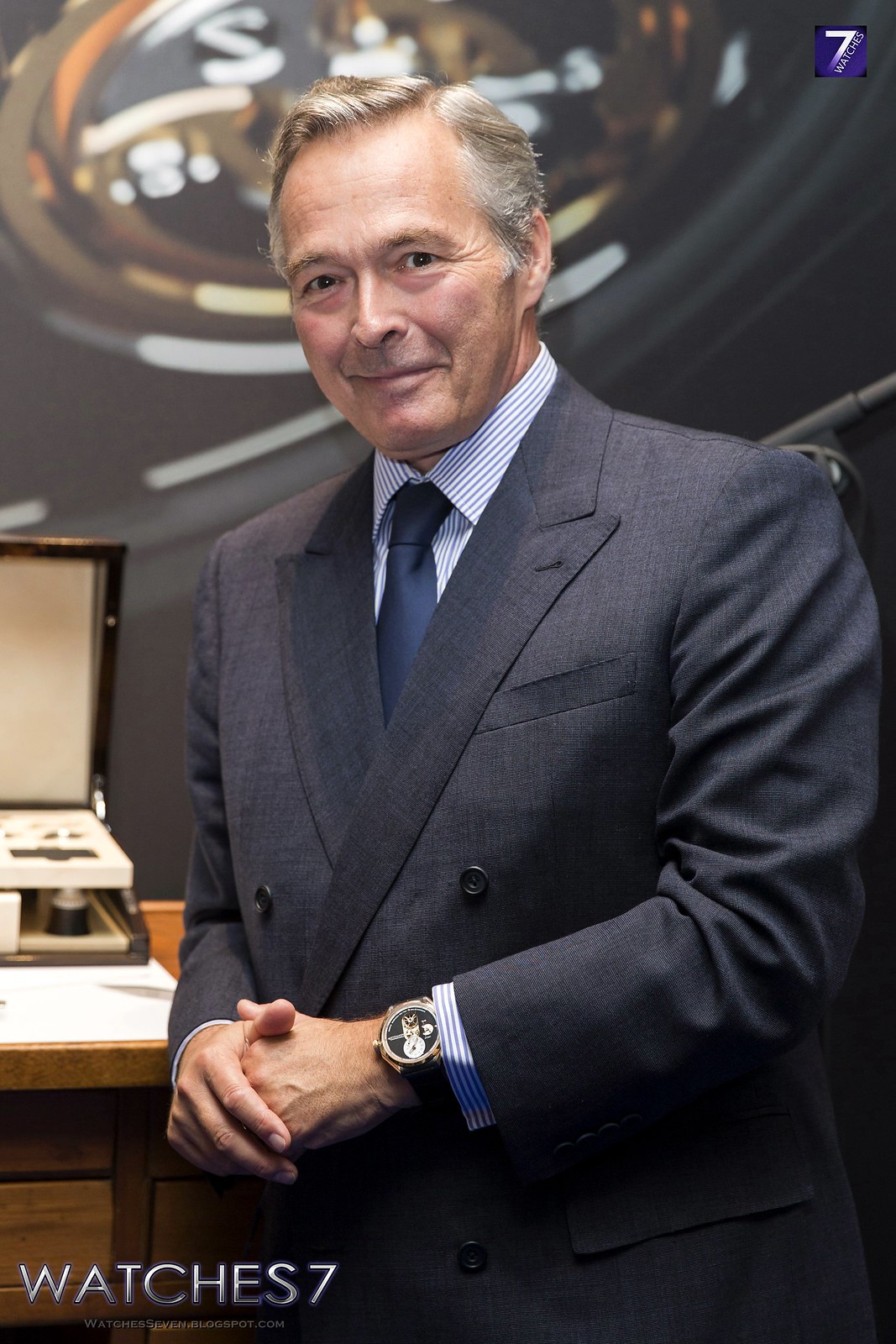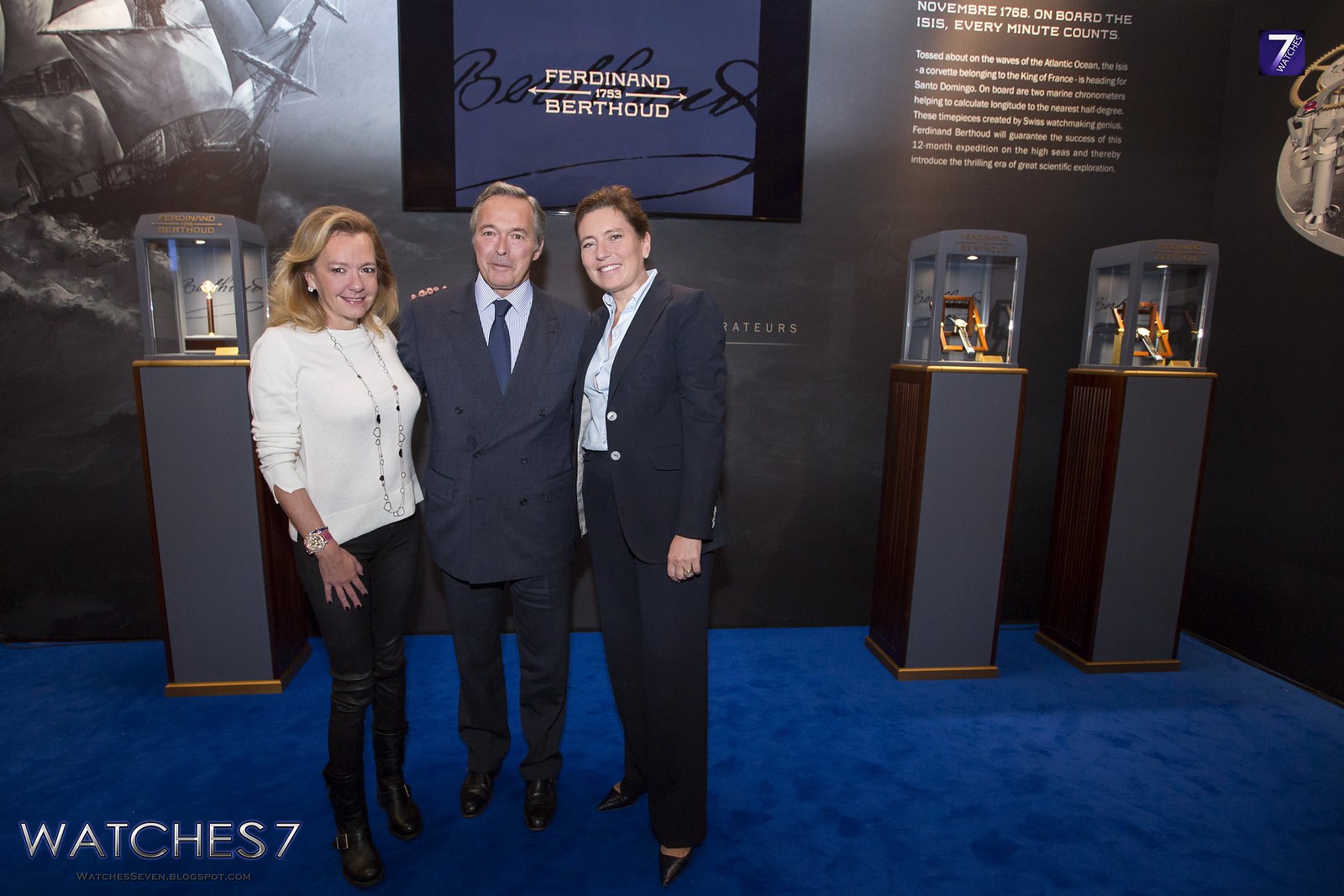A. Lange & Söhne – LANGE 1 Tourbillon PERPETUAL CALENDAR White Gold NEW
Click on the mouse wheel to see the large size .... BIG FOTO
Thanks to a clear arrangement of the calendar display around the time indication, the LANGE 1 TOURBILLON PERPETUAL CALENDAR presents an abundance of information at a single glance. The latest model of this horological masterpiece is now presented in a discreet white-gold case with a grey dial.
Click on the mouse wheel to see the large size .... BIG FOTO
The LANGE 1 TOURBILLON PERPETUAL CALENDAR combines two classic complications with the iconic design of A. Lange & Söhne's most famous watch family. The calendar consists of a Lange outsize date, retrograde day-of-the-week and leap-year displays and a peripheral month ring. Due to the clear separation of the time and date, all information can be taken in at even a cursory glance. All of the perpetual calendar displays advance instantaneously. The mechanism is designed in such a way that it must be advanced only by one day in the year 2100. And the moon-phase display, located inside the subsidiary seconds dial, will even run true for 122.6 years before it needs to be corrected by one day.
Click on the mouse wheel to see the large size .... BIG FOTO
A subtle inscription beneath the twelve refers to the existence of the tourbillon. By looking through the sapphire-crystal caseback, it can be admired in all its technical complexity. The movement is equipped with Lange's patented stop-seconds mechanism. It brings the balance inside the tourbillon cage to a standstill instantly, gently and safely when the crown is pulled. This allows the watch to be set with one-second accuracy. The upper part of the tourbillon cage is decorated with black polish, the most sophisticated and time-consuming type of artisanal surface finishing. The bearing of the tourbillon cage features a diamond endstone as a tribute to the historic 1A pocket watches by A. Lange & Söhne.
Click on the mouse wheel to see the large size .... BIG FOTO
A solid central rotor with a 21-carat-gold segment in the middle and an additional platinum centrifugal mass on the periphery efficiently tension the mainspring of the self-winding calibre L082.1 movement so that the maximum power reserve of 50 hours is built up after just a short time on the wrist. Typical Lange quality hallmarks include the lavishly decorated movement with hand-engraved tourbillon and intermediate wheel cocks as well as screwed gold chatons.
----------------------------------------------------
Technical Specifications
Model: LANGE 1 Tourbillon PERPETUAL CALENDAR Wwhite Gold
Reference №: 720.038
Movement
Lange manufacture calibre: L082.1
Number of movement parts / jewels: 624 / 76, including one diamond endstone
Screwed gold chatons: 6, including one diamond endstone
Escapement: Lever escapement
Oscillator:
Shock-resistant balance with eccentric poising weights,
balance spring manufactured in-house with a frequency of 21,600 semi-oscillations per hour
Power reserve: 50 hours when fully wound
Functions:
Off-centre time indication for hours and minutes; subsidiary-seconds dial;
tourbillon with patented stop-seconds mechanism; perpetual calendar
with outsize date, retrograde day-of-week display, peripheral month ring
and leap-year display; moon-phase display; day/night indicator
Case measures: Diameter: 41.9 millimetres; height: 12.2 millimetres
Movement measures:
Diameter: 34.1 millimetres; height: 7.8 millimetres
Case: 18-carat white gold
Dial: Solid silver, grey
Hands: Rhodiumed gold
Case versions:
Pink gold, white gold
Strap
Hand-stitched alligator leather strap
Buckle: White-gold prong buckle
-------------------------------------------
Contact information for the media
Arnd Einhorn, Director Press and PR
* Tel.: +49 (0)35053 44 5505
E-mail: presse@lange-soehne.com
-------------------------------------
www.facebook.com - Lange&Soehne
----------------------------------------------------
www.Alange & Soehne.com
Click on the mouse wheel to see the large size .... BIG FOTO
Thanks to a clear arrangement of the calendar display around the time indication, the LANGE 1 TOURBILLON PERPETUAL CALENDAR presents an abundance of information at a single glance. The latest model of this horological masterpiece is now presented in a discreet white-gold case with a grey dial.
Click on the mouse wheel to see the large size .... BIG FOTO
The LANGE 1 TOURBILLON PERPETUAL CALENDAR combines two classic complications with the iconic design of A. Lange & Söhne's most famous watch family. The calendar consists of a Lange outsize date, retrograde day-of-the-week and leap-year displays and a peripheral month ring. Due to the clear separation of the time and date, all information can be taken in at even a cursory glance. All of the perpetual calendar displays advance instantaneously. The mechanism is designed in such a way that it must be advanced only by one day in the year 2100. And the moon-phase display, located inside the subsidiary seconds dial, will even run true for 122.6 years before it needs to be corrected by one day.
Click on the mouse wheel to see the large size .... BIG FOTO
A subtle inscription beneath the twelve refers to the existence of the tourbillon. By looking through the sapphire-crystal caseback, it can be admired in all its technical complexity. The movement is equipped with Lange's patented stop-seconds mechanism. It brings the balance inside the tourbillon cage to a standstill instantly, gently and safely when the crown is pulled. This allows the watch to be set with one-second accuracy. The upper part of the tourbillon cage is decorated with black polish, the most sophisticated and time-consuming type of artisanal surface finishing. The bearing of the tourbillon cage features a diamond endstone as a tribute to the historic 1A pocket watches by A. Lange & Söhne.
Click on the mouse wheel to see the large size .... BIG FOTO
A solid central rotor with a 21-carat-gold segment in the middle and an additional platinum centrifugal mass on the periphery efficiently tension the mainspring of the self-winding calibre L082.1 movement so that the maximum power reserve of 50 hours is built up after just a short time on the wrist. Typical Lange quality hallmarks include the lavishly decorated movement with hand-engraved tourbillon and intermediate wheel cocks as well as screwed gold chatons.
----------------------------------------------------
Technical Specifications
Model: LANGE 1 Tourbillon PERPETUAL CALENDAR Wwhite Gold
Reference №: 720.038
Movement
Lange manufacture calibre: L082.1
Number of movement parts / jewels: 624 / 76, including one diamond endstone
Screwed gold chatons: 6, including one diamond endstone
Escapement: Lever escapement
Oscillator:
Shock-resistant balance with eccentric poising weights,
balance spring manufactured in-house with a frequency of 21,600 semi-oscillations per hour
Power reserve: 50 hours when fully wound
Functions:
Off-centre time indication for hours and minutes; subsidiary-seconds dial;
tourbillon with patented stop-seconds mechanism; perpetual calendar
with outsize date, retrograde day-of-week display, peripheral month ring
and leap-year display; moon-phase display; day/night indicator
Case measures: Diameter: 41.9 millimetres; height: 12.2 millimetres
Movement measures:
Diameter: 34.1 millimetres; height: 7.8 millimetres
Case: 18-carat white gold
Dial: Solid silver, grey
Hands: Rhodiumed gold
Case versions:
Pink gold, white gold
Strap
Hand-stitched alligator leather strap
Buckle: White-gold prong buckle
-------------------------------------------
Contact information for the media
Arnd Einhorn, Director Press and PR
* Tel.: +49 (0)35053 44 5505
E-mail: presse@lange-soehne.com
-------------------------------------
www.facebook.com - Lange&Soehne
----------------------------------------------------
www.Alange & Soehne.com



